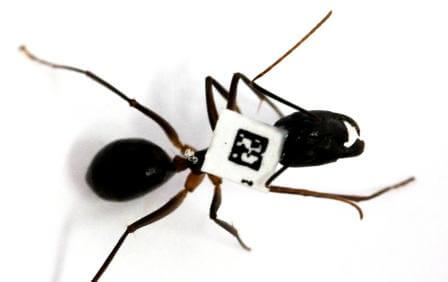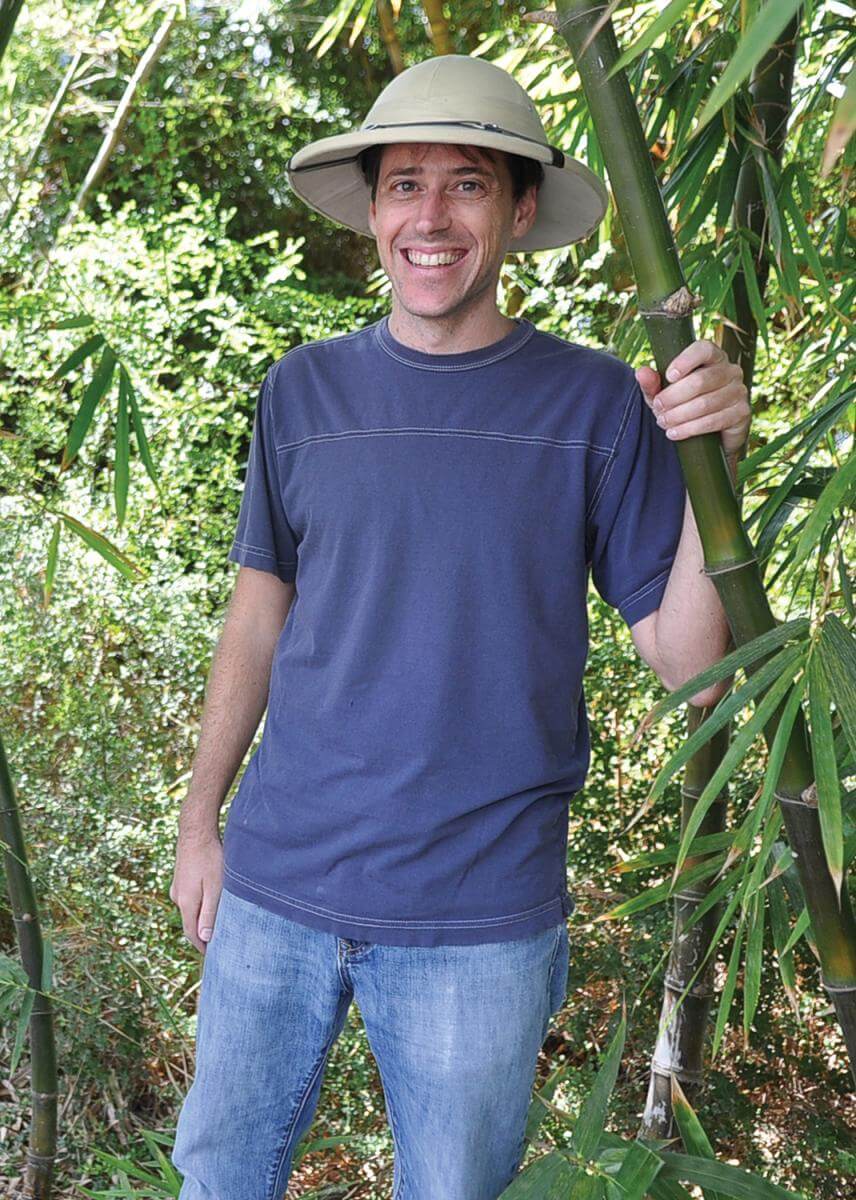The communication patterns of ants may be used as a model for the operating principles of complex biological systems, and information processing systems

Ants, which have inhabited the earth for 100 million years, are one of the wonderful examples of biological cooperation of the kind Darwin meant when he said: "Individuals that learned to improvise and cooperate, managed to survive." Thousands of female ants take part in a coordinated and joint activity, with the aim of meeting all the needs required for the normal life of the entire colony (in contrast, the male ants do not share in the effort. Their entire role is to mate with the queen, and after they have performed this task - they die). Some ants go out to bring food, while others stay to take care of the offspring, build the nest, perform "maintenance" work, and protect the colony, and there are even ants whose job it is to bury the dead. A fact that deserves special mention is that this joint activity is conducted without a leader - in the colony there is no "boss" or "governing body" that organizes the many tasks. Without governmental mechanisms, most companies will go out of balance and become extinct. How then do the ants manage to cooperate, and divide the work in such a successful and "considerate" way?
In his new laboratory in the Department of Physics of Complex Systems at the Weizmann Institute of Science, Dr. Ofer Feinerman and the members of his research group hope to reveal some of the secrets of ants through a joint and coordinated effort of their own, based on customer research methods from fields such as information theory, statistics and theoretical physics, computer science, biology of systems, neuroscience, and of course, biology. "Biology is based on complex systems, which are built from individual components - proteins, cells or living beings. The creatures themselves are organized in networks that coordinate their activity. But while the science of biology is able to identify and characterize the individual components, the interrelationships between them are extremely complex, and analyzing this data with biological methods is impossible. "By 'borrowing' tools from the field of physics and mathematics, quantitative measurements can be brought into the picture, and through them define the laws governing the complex collective behavior that characterizes a biological network," says Dr. Feinerman.
Talk to the ants
Ants "talk" to each other mainly in the language of chemicals. So, for example, when an ant finds a rich food source, it leaves behind a trail of pheromones, which mark the way for the other ants. But Dr. Feinerman wants to understand more deeply the social networks that are formed between the ants during the transfer of this type of information.
Into a facility, reminiscent of the Big Brother house, Dr. Feinerman put a number of ants. The artificial nest-like structure is networked with cameras, which allow scientists to eavesdrop on "conversations" between the ants. Additionally, by individually barcoding each ant, the scientists are able to track and record the activities of each ant. This is how they hope to answer questions like: Who is talking to whom? Are there different social groups, or do all ants communicate with each other, without "discrimination"? Is the transmission of the messages done when the ants stay in place - similar to the game "Broken Telephone", or is it a "courier service", in which the ants transmit messages over long distances?
Dr. Feinerman: "Ants use diverse communication strategies ranging from one extreme to another, depending on the environment and context. One example of this is the 'sack of flour' method, where one ant rides on the back of another ant. This method is slow, but it is reliable and direct, and can serve them in different situations, such as, for example, to make sure that a certain ant reaches exactly the food source, without the danger of losing its way. Other situations require less focused but faster methods of communication. For example, if the colony is attacked, the ants release pheromones that are dispersed in the air. This acts as an alarm system, which quickly warns the neighboring colonies."
The aim of the study is not only to reveal the complicated principles of operation of the ant colony. In the longer term, the scientists hope to use the principles of this magnificent cooperative system to develop a theory for collective information processing. Another goal is to develop tools that will help answer fundamental questions about the activity of other complex biological systems - such as, for example, how the cells of the immune system work together to fight infection. This theory may also have uses in the design of distributed systems, such as antennas for cellular communication, networks of wireless sensors, and even groups of robots that play rescue and rescue roles.
Queen of the class
At the head of every ant colony is the queen, but she does not control or exercise any kind of control over the working ants. Her only job is to lay eggs. Without a ruler, how do the ants divide the work between them? Is it a hierarchical organization where each ant has a defined role, or are they all equal?
In his previous studies, Dr. Feinerman investigated whether certain characteristics, such as previous experience, age, body weight and location in space, determine the division of roles in the nest. To test this, he examined how the ants respond to the increasing demands of a particular task. The ants were placed in an artificial nest, and the scientists made changes to the tasks by stopping the food supply, or adding new larvae unexpectedly - to test which ants mobilized to handle the new situation.
The study revealed that the thinnest ants are the ones that escape to look for food, and also those that mobilize to move the new offspring that were "implanted" in the nest to the area where the larvae are cared for, but they do not take part in the care of the new larvae afterwards. In fact, the task of taking care of the offspring is randomly assigned to the ants that were brought into the environment, regardless of the ant's age, experience or body weight.
"Sending the thin ants to look for food may be a good strategy for the survival of the colony, because the loss of the ants will be less expensive for the entire colony. These ants attract less predators, and thanks to their ease of movement, they are more efficient in carrying out the task. The fact that the task of caring for the offspring does not depend on the characteristics of the ant implies that the flexibility in the division of duties, and general cooperation, are more important qualities for the survival of the colony than, for example, expertise or experience in performing a particular task, because they allow a quick response to changing conditions," says Dr. Feinerman .

personal
Ofer Feinerman was born in Rehovot. He received a bachelor's degree in physics and mathematics (1996) and a master's degree in physics (1999) from the Hebrew University. As a PhD research student at the Weizmann Institute of Science, he was the first to create, under the guidance of Prof. Elisha Moses, an artificial logic circuit made of nerve cells, and received his doctorate in 2006. He then embarked on post-doctoral research at the Sloan Kettering Cancer Research Center in New York, where Research how the immune system's regulatory T cells work together to fight infections. He spent a year studying ants at Rockefeller University, and in October 2010 joined the Department of Physics of Complex Systems at the Weizmann Institute of Science. "Returning to the institute was a dream come true for me. She gave me not only the opportunity to return to Israel, but also the freedom to engage in research on an unconventional and fascinating subject."
Ofer Feinerman is married to Mika, a mosaic artist, and has three children: Matan, nine, Shai, seven, and Nomi, four.

3 תגובות
period, what do you mean?
I missed or didn't understand.
Tell me what your dream is and I'll tell you who you are
Go to the lazy ant, see its ways and be wise.